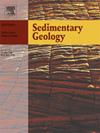Re-inundation of the North China epeiric platform: A cyclic peritidal succession above a Lower–Middle Ordovician unconformity in southern Korea
IF 2.9
2区 地球科学
Q1 GEOLOGY
引用次数: 0
Abstract
The depositional record of epeiric platforms is typically interrupted by unconformities, reflecting repetition of sedimentation and non-deposition. The Ordovician epeiric platform on the North China includes a Lower to Middle Ordovician unconformity, and this study documented early Darriwilian re-inundation events in the Makgol Formation from four sections over a distance of 25 km in the Taebaek area, eastern North China Craton.
The Makgol Formation mainly comprises micritic limestone with subordinate laminite and grainy facies, exhibiting subaerial exposure features in its lower part, and is interpreted as a micrite-dominated inner platform deposit. The re-inundation pattern is characterized by accumulation of metre-scale peritidal and subtidal cycles, which show an overall deepening upward trend, marked by a decrease in exposure features and an increase in subtidal cycles. However, this deepening trend was not gradual and occurred stepwise. Seven cycle sets, each consisting of one to six cycles, are described along with eight correlated key flooding surfaces. Each flooding event caused retreat of the facies belt to varying degrees, while cycles within cycle sets exhibited shallowing upward stacking patterns. These deepening upward trends are similar to punctuated transgressions observed in continental shelves, which suggest the applicability of the sequence stratigraphic concept from continental margins to inner epeiric platforms.
Lateral variations in the number of cycles between sections are recognised in seven intervals, four of which are interpreted as the result from erosion and non-deposition associated with subaerial exposure features. This finding suggests the incompleteness in transgressive deposits in inner epeiric platform conditions and highlights the importance of identifying missing cycles for the interpretation of stacking pattern and origin of metre-scale cycles.
华北陆表台地的再淹没:朝鲜南部下-中奥陶统不整合之上的旋回潮缘演替
表陆台地的沉积记录通常被不整合面打断,反映了沉积和非沉积的重复。华北地区奥陶系表台地包括下奥陶统至中奥陶统不整合,本研究在华北克拉通东部太白地区进行了四段25 km范围内的马戈里组早期Darriwilian再淹没事件的记录。Makgol组主要由泥晶灰岩组成,下部为次级纹层岩和颗粒相,下部具有陆上出露特征,为泥晶为主的内台地矿床。再淹没格局以米尺度潮周和潮下旋回的积累为特征,总体呈加深上升趋势,暴露特征减少,潮下旋回增加。然而,这种加深的趋势不是渐进的,而是逐步发生的。描述了七个循环集,每个循环集由一到六个循环组成,以及八个相关的关键淹水面。每次淹水事件均不同程度地导致相带退缩,旋回组内旋回呈现浅层向上叠加模式。这种不断加深的上升趋势与陆架上观察到的断续海侵相似,表明层序地层学概念从大陆边缘到内表台地的适用性。剖面之间旋回数量的横向变化在7个区间内被识别出来,其中4个被解释为与地面暴露特征相关的侵蚀和非沉积的结果。这一发现表明了内表陆台地条件下海侵沉积的不完全性,并强调了识别缺失旋回对于解释米尺度旋回的堆积模式和成因的重要性。
本文章由计算机程序翻译,如有差异,请以英文原文为准。
求助全文
约1分钟内获得全文
求助全文
来源期刊

Sedimentary Geology
地学-地质学
CiteScore
5.10
自引率
7.10%
发文量
133
审稿时长
32 days
期刊介绍:
Sedimentary Geology is a journal that rapidly publishes high quality, original research and review papers that cover all aspects of sediments and sedimentary rocks at all spatial and temporal scales. Submitted papers must make a significant contribution to the field of study and must place the research in a broad context, so that it is of interest to the diverse, international readership of the journal. Papers that are largely descriptive in nature, of limited scope or local geographical significance, or based on limited data will not be considered for publication.
 求助内容:
求助内容: 应助结果提醒方式:
应助结果提醒方式:


